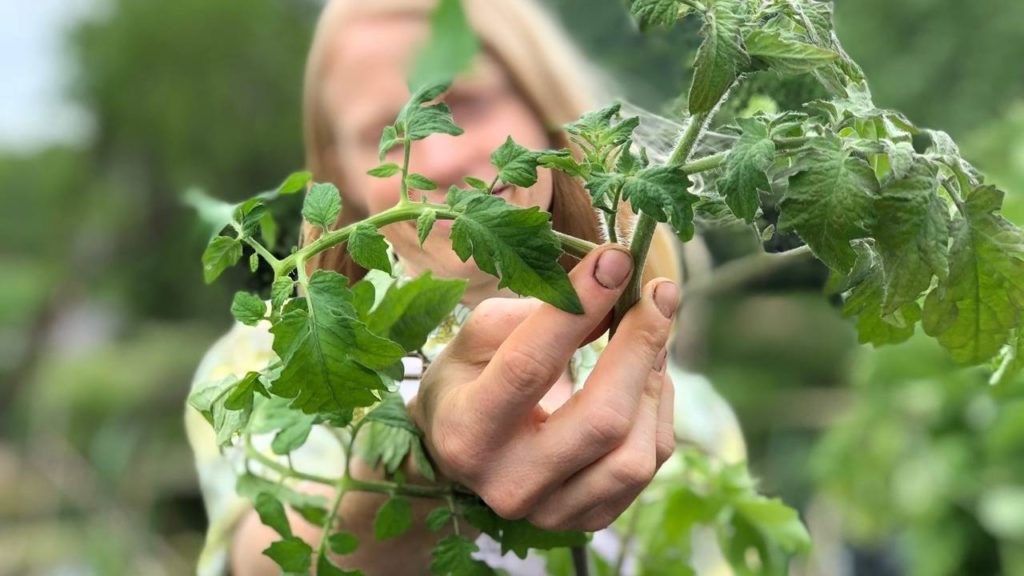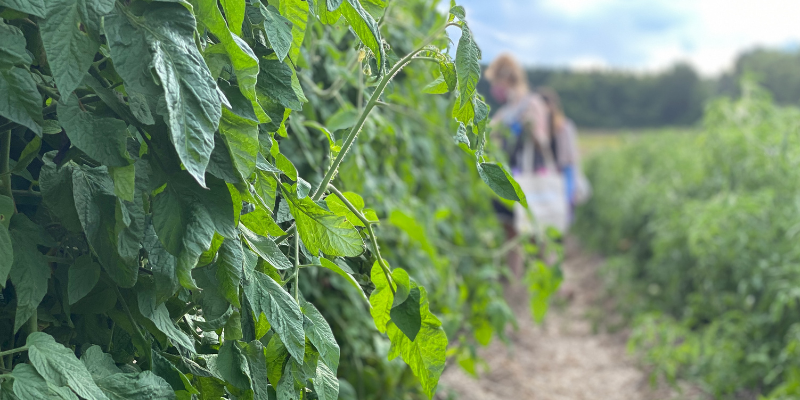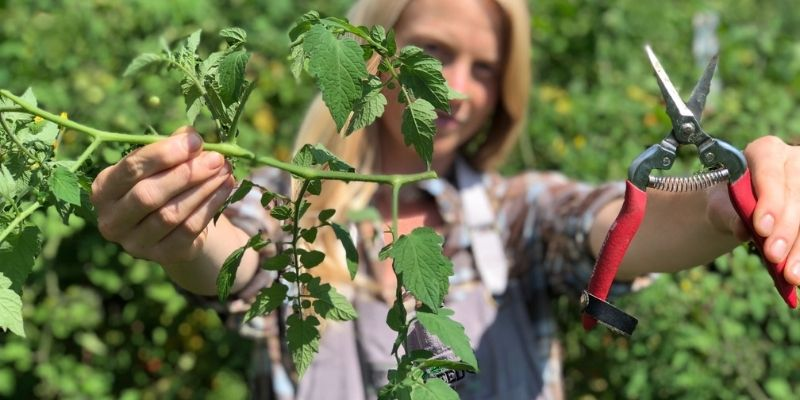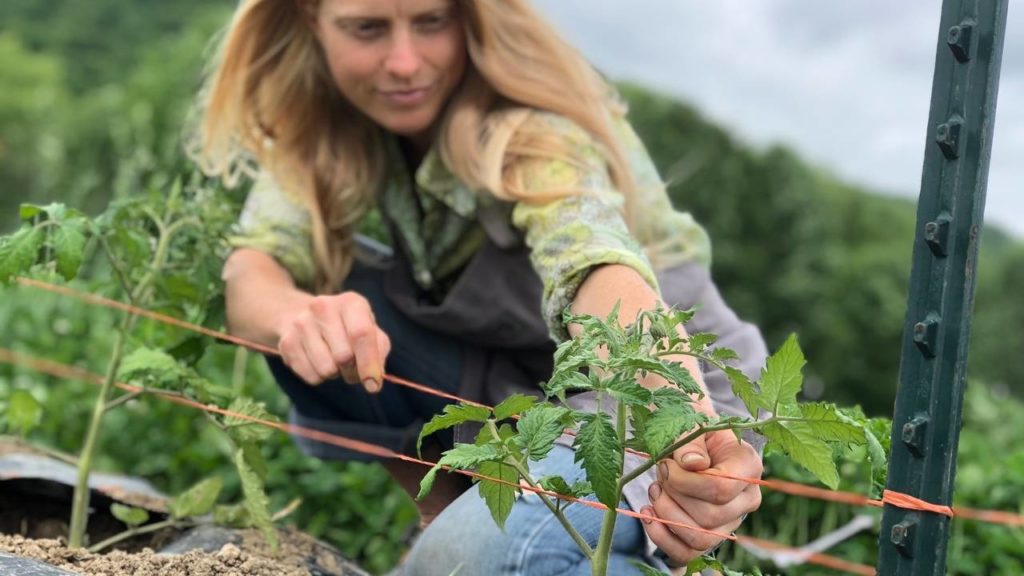Growing tomatoes is deceptively simple: from starting seeds to growing healthy seedlings, from pruning (or not) to trellising optimally for your variety, there are a lot of variables to consider. Here are the keys of pruning and trellising to keep your life as simple as possible.
Pruning Tomatoes
Tomatoes are naturally sprawling understory plants in their native jungles of what we now call Central America. Un-pruned, your tomatoes will become a jungle!
What part of the tomato do we prune?
Tomatoes produce abundant growth and fruiting branches often called ‘suckers’ and Friends, instead of pruning tomato ‘suckers’ we prune ‘bonus branches’ which is a Fruition community-sourced vocab shift which we just love!

Why do we prune tomatoes?
Each bonus branch emerges from between a leaf and the mainstem, having the capacity to grow more leaves, flowers, fruit and even more bonus branches. Which is a brilliant evolutionary strategy — as well as a nearly exponential capacity to become a jungle.
Pruning tomato bonus branches make your tomatoes more manageable as well as fruitful. Pruning also increases light infiltration as well as airflow around your tomatoes, hastening ripening and decreasing disease susceptibility.
How do we prune tomatoes?
Not all tomatoes need pruning, though the ones that need it really benefit from it.
Compact tomatoes, for example, need no pruning.
Indeterminate cherries plus semi-determinate and determinate varieties only need pruning in the first few weeks, ensuring that the bottom foot of each stem is a strong ‘single leader.’
Indeterminate slicers benefit from even more pruning, so there is more space, light and airflow in the canopy.

Timing of Tomato Pruning
The earlier you prune the better, so you’re removing wisps of ‘bonus branches’ rather than large branches. Tiny bonus branches can be snapped off by hand; larger than a pencil, snip your bonus branches with scissors. Pruning your tomatoes is more about trial and error than precision, since each tomato plant is unique. Interestingly, some varieties need more pruning than others. Our ‘Italian Heirloom,’ for example, is naturally more sparse in foliage and branching than most. Also, it’s easy to prune too much, especially when you’re first learning to prune, so hold back and simply observe the growth habits of your plants. You’ll never look at tomatoes quite the same!
Pruning Tomatoes for Season’s End
We also ‘prune’ our tomatoes about 4 weeks prior to frost, lopping off all the vegetative growth above the highest fruit set. Since tomatoes take about 28 days to ripen from flower to fruit, ‘topping’ tomatoes in this way helps your plants focus on ripening the fruit already forming while encouraging more light to infiltrate the canopy, additionally encouraging fruit ripening.

Trellising Tomatoes
All tomatoes benefit from trellising. Even compact varieties only 2.5 feet tall will ripen more fruit more quickly and be less susceptible to disease when trellised! Tomato ‘cages’ we rarely recommend except for compact varieties in containers; for all other tomatoes we recommend ‘The Florida Weave,’ brilliantly using just stakes and twine. Placing one 5-foot stake every three plants, weave twine (baling twine is much stronger than jute) between each plant, pulling as taught as possible between stakes. Circle each stake twice to help hold the line taught, tying off once you reach the end. We aim to place twine every foot or so high, with lines pulled taught on both sides of your plants.

We’re constantly experimenting, learning and sharing what we love with you, Friends! What are your favorite strategies? Hardest and best learning moments? The more we share the more we learn, so don’t be shy!
Sow Seeds & Sing Songs,

and the Many Beings of Fruition
ps
If you’d love to learn more, hop in to Fruition’s free
Growing Great Tomatoes Course!
enjoy!


Thank you! I always use cotton twine to trellis as I compost it at the end of the season! Isn’t bale twine plastic?
Thank you for all you do!
I use 16’ cattle panels for trellis. No sag and sometimes the vertical stays help support the main stem. I can use clips to attach plant to the frame and reuse clips every season